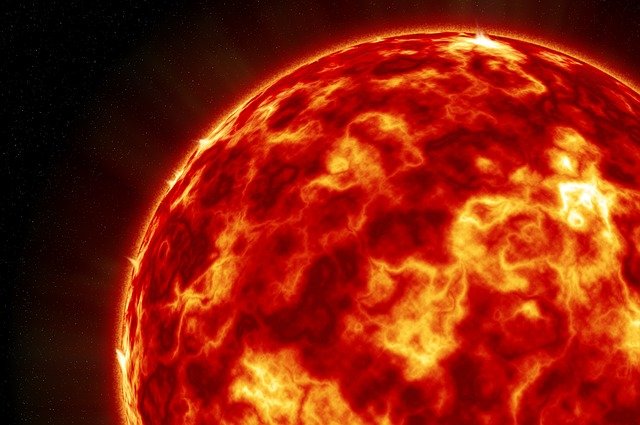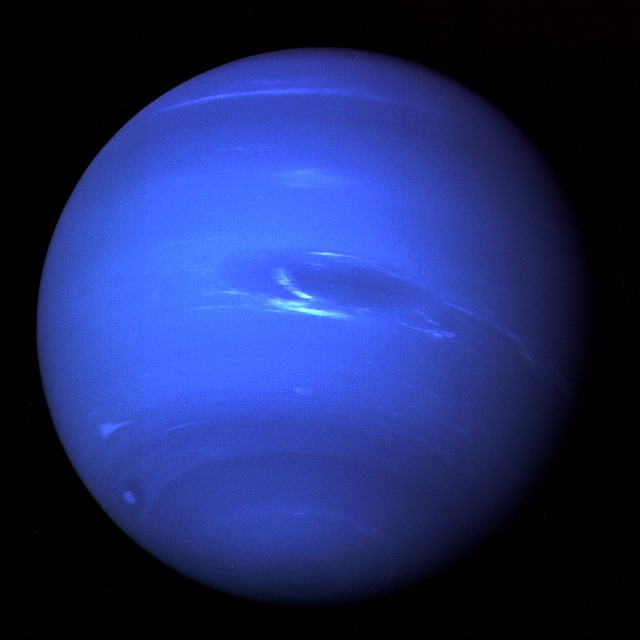*This post may contain affiliate links. This means we may make a commission if you purchase an item using one of our links*
Neptune is the 8th farthest planet from the Sun, is blue in color and very cold whereas the Sun is the star at the center of the solar system that Neptune orbits, produces the energy we receive and has a gravitational force so strong that multiple celestial objects orbit it. Both entities may be made of mostly gas however, they operate very differently from one another.
For a more detailed breakdown of the similarities, differences and how each one of these celestial objects function, continue reading.
What Is The Sun?
Table of Contents

The Sun is the bright, celestial entity at the center of our solar system and is also a star that falls under the G type main sequence star bracket (also called a yellow dwarfs), all of which are medium sized stars that tend to be around 0.84 – 1.15 solar masses.
Our Sun is 1 solar mass, making it a medium sized medium star. It’s also on the brighter side for a yellow dwarf, the color that it emits is white as opposed to the slightly yellow that less luminous yellow dwarfs would be.
Of course we still see the Sun as yellow or even red on Earth but, the reason for this significant color shift is because our atmosphere scatters and breaks up the photons that reach us, ultimately changing the true color of the light rays from white to the yellow, orange or red we see in our day to day.
As it is a star, the Sun will actively convert the hydrogen elements at its core into helium, through a process called nuclear fusion.
Nuclear fusion is the reason why it generates light and produces the energy we receive, helping us power machinery, technology, grow crops so on and so forth.
The process of nuclear fusion also affects how hot our star burns, allowing the sun to hit temperatures around 6000°C on a daily basis. This will be the case for another 4.5 – 5 billion years until it’s unable to convert hydrogen into helium.
Once hydrogen cannot be converted, an imbalance between the inward and outward forces keeping the Sun together will occur, causing an imbalance which would result in our Sun bloating up many many times its current size.
When this happens it will enter its red giant phase, where it’ll be around 256 times larger than it is now.
This phase will last for around a billion years until it sheds it mass through a process called planetary nebula, leaving behind only a dead white dwarf remnant.
What Is The Planet Neptune?

Neptune is the 8th farthest planet from the Sun and ranks among the bigger planets in our solar system. As the 8th farthest planet from the Sun, it does take Neptune a very long time to complete 1 orbital cycle around the Sun.
This takes 165 years to complete which is far longer than the 16 hours needed to complete 1 full day/full spin around the axis.
In regards to its composition, Neptune is mostly made up of a thick swath of water closer to the center, methane, ammonia, hydrogen and helium molded around its Earth sized core.
As a result of the excess amount of methane and the inclusion of another undiscovered element within the atmosphere, Neptune’s color is a far deeper blue than the likes of Uranus, which also has a methane based atmosphere.
The planet is 49,244km in diameter, making it roughly 4 times Earth’s diameter, and would allow around 57 Earth sized planets to fit inside it. This also makes Neptune the 4th largest planet in our solar system.
Neptune is very cold, which is mostly down to its distance from the Sun, where its atmospheric temperature sits between -220 to -230 degrees Celsius. Its core is far hotter coming in at 5,100 degrees Celsius and is the very likely cause for the liquid water present within the planet.
Subsequently, the erratic temperature and gaseous composition of Neptune, is what constitute towards its turbulent behavior.
In fact Neptune has the fastest winds in our solar system, producing some that eclipse speeds of 2,000km per hour. The fastest winds on Earth would only be a fifth of these speeds at most.
At this moment in time we have discovered 14 moons orbiting Neptune and have also observed 5 thinner rings surrounding the ice giant.
Similarities Between The Sun And Neptune
Neptune and the dun do have a few similarities between them where both are composed mostly of hydrogen and helium, both have far hotter core, both are spherical in shape and are part of the same solar system.
Other than these few commonalities, our Sun and Neptune are very different from one another.
Differences Between The Sun And Neptune
As for the differences between them, they include the following:
- The Sun is much bigger than Neptune where Neptune is 49,244km in diameter and the Sun is a ludicrous 1.39 million km. for reference around 1,800 Neptune sized planets could fit inside the Sun.
- Neptune is far colder than the sun where its atmospheric temperature is -220 to -230 degrees Celsius whilst the Sun is around 6000 degrees Celsius. Even Neptune’s core is cooler than the Sun’s surface achieving only 5,100 degrees Celsius whereas the Sun’s core is scorching ejecting heat levels in the region of 15 million degrees Celsius.
- It takes Neptune 16 hours to spin once around its axis whereas the Sun spins around its axis once every 27 days.
- The Sun will eventually die and collapse into a white dwarf. Neptune on the other hand will not.
- The solar wind speeds on the Sun are much faster than anything Neptune produces, even if it is the windiest planet in the solar system. Neptune’s wind speeds are around 2,000 km/h whereas the Sun’s solar wind speeds can be 1.4 million km/h.
- The Sun obviously has more mass than Neptune where its is 1.989 × 10^30 kg and Neptune’s is 1.024 × 10^26 kg.
- Both have objects orbiting them but, the Sun does not orbit anything (not in modern times that is) whereas Neptune orbits the Sun.
- Neptune is a deep blue color whereas the Sun is white.
- Neptune has a magnetic field strength of 0.13 gauss whereas the Sun’s magnetic field strength is 1 gauss
- The Sun is 4.6 billion years old whereas Neptune is 4.5 billion years.
- Neptune has 14 moons orbiting it whereas the sun has all of the planets, asteroid belt, and even the dwarf planet Pluto orbiting it.
Summary
Neptune is the farthest official planet in our solar system whereas the Sun is what allows our solar system to function, whether it be orbital patterns of those orbiting it, the axial rotation of a planet, the temperature of the objects orbiting it as well as their life and death.
As a whole both entities here differ significantly from each other despite their very close proximity and the odd few similarities. This makes a ton of sense when you consider one is a scorching hot star and the other a planet.

